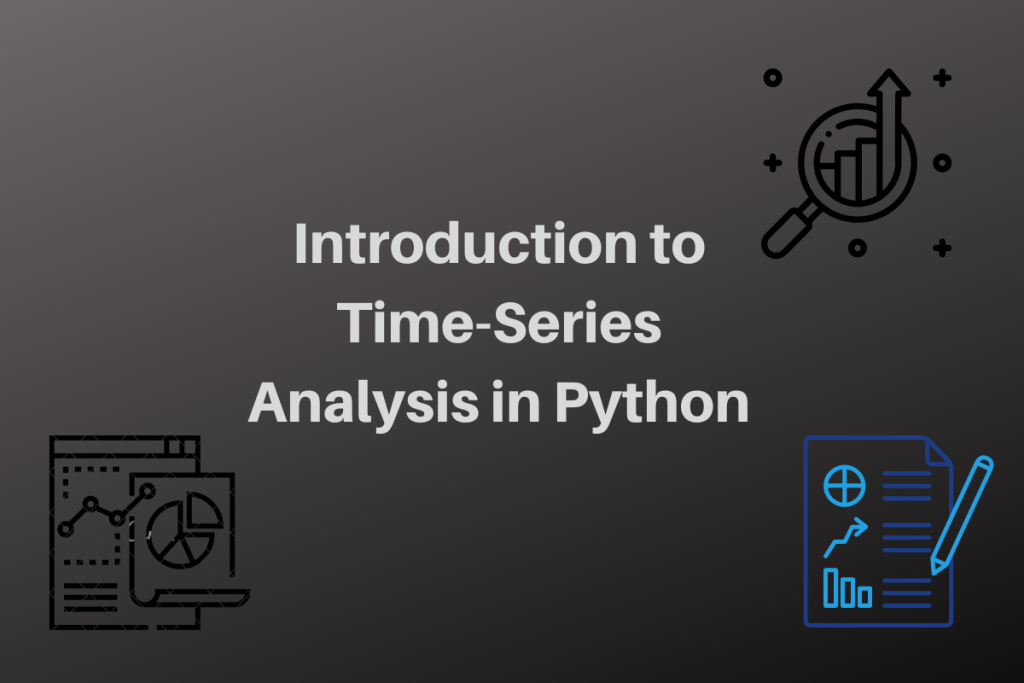In this article, we will be looking at Time-Series analysis. Time series data is data of or relating to time. To be precise, time series data are indexed at particular time intervals, hence the name. Examples of time series data are stock prices over the financial year, amount of rainfall per day in a particular area over 10 years, etc.
Time series is an extremely important field of study for data analysts, and as Python is a simple and easy-to-use language, there are numerous libraries and modules available for such analysis. We will be going through some of them today.
What is Time series Analysis?
As in all statistical analysis, time series data is collected for something we are interested in. The data is analysed through computers and graphic as well as numerical results are produced. Analysts can use mathematical trend fitting and other methods to even make logically sound predictions. The data also provides a clearer picture of the real-life situation than what meets the eye normally.
A time series is a set of numerical measurements of the same variable taken at equally spaced time intervals. Time series data can be collected, yearly, monthly, quarterly, weekly, daily or even hourly. Time series data has four major aspect behaviours:
- Trend
- Seasonality
- Cycles
- and Unexplainable Variation (outliers included)
The trend is the overall long-term direction of the time series. One example of the trend will be the long-term increase in the popularity of singers and songwriters. The “trend” is followed regularly over the years. Some series may not have any particular trend.
Seasonality occurs when there is repeated behaviour which occurs at a regular interval. An example of this would be the tendency of daily rainfall in the months of June-September in India. We know that this occurs every year.
Cycles occur when the series follows an up-and-down pattern that is not seasonal. The cycle can be of varying lengths, which makes them more difficult to be recognized than seasonality.
In all data, there is the existence of random disturbances or random variation. This is treated as an error in data. However much powerful our calculation may be, there will always be some amount of error included. In some data, the error is more, and in some, the error is less.
Python Modules to use in Time-Series Analysis
There are several libraries available for time-series analysis. We will be looking at the top 5 libraries that make it very easy for us to conduct our own analysis.
darts module
First and foremost, we will be looking at darts, which is a python library made specifically for time-series. Dart supports both univariate and multivariate data which makes it perfect for both beginners as well as some experienced analysts.
The library also comes with the ability to train neural networks. There are also deep-learning models implemented in this library. To install the library, execute the following code:
pip install darts
tfresh module
For our second module, we will be looking at the tsfresh module. Tsfresh is very fast at the calculation of common time-series parameters You can automatically calculate over 1200 features, and easily manage the data. It also supports different time series lengths. Parallelization is also supported thanks to feature selection and extraction. You can install tsfresh by running the following command:
pip install tsfresh
kats module
The next module which has to be included is Kats. One unique feature of Kats is that it can recognize and report on various time series patterns such as trends, seasonal variations and outliers. To install kats, run the following code:
pip install kats
pastas module
One of the interesting modules to use is Pastas. It is an open-source python package that is used specifically to analyse hydro-geological time series data. You can install Pastas by running the following code:
pip install pastas
Pastas support the ARMA model and can be used to remove autocorrelation if it is expected to be found.
PyFlux
Our final library is PyFlux. PyFlex offers an extensive choice of models and inference options. Users are able to use the library and come up with a full probabilistic model, this way there is also something to be found about the uncertainty or the error term.
This, however, is time-consuming. For small projects, users can use the maximum likelihood method. Use the following command to install PyFlux:
pip install pyflux
Time-series data sets
A dataset is normally stored in a tabular format, each column in this table contains measurements for a given variable/feature. In time-series datasets, the columns can contain one or more variables repeatedly measured over time. Time series therefore can be univariate or multivariate.
Let us now look at the formats in which time series data can be stored. Usually, there are two formats: Long format and Wide format. In long format, values from distinct time series are stored in the same column. Storing the data this way makes it a necessity to have an identifier column so that we can tell apart in case of multiple variables.
Another format is the wide format, where data is stored in such a way that each individual time series is stored in a separate column.
The user will have to decide which format is to be followed for their specific use case, as different kinds of analysis call for different data types.
Summary
We hope you have enjoyed learning about data analysis in Python and are looking forward to more such tutorials. That’s it for this article, for more such awesome content on data analysis be sure to check this link!
